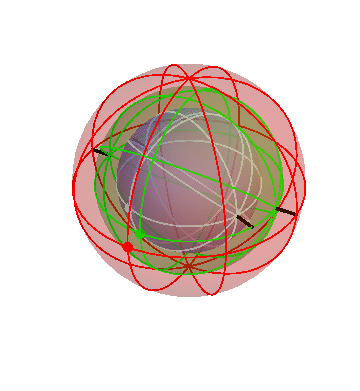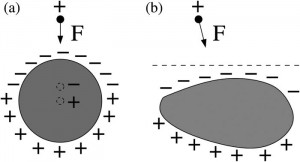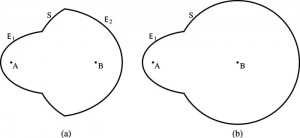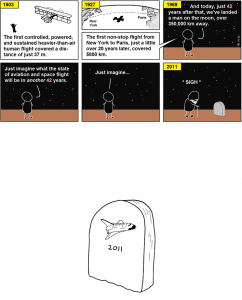I’m trying to be pretty rigorous in evaluating my students’ writing, but one thing I’m not telling them is to avoid the passive voice. I think that the avoid-the-passive rule, despite its popularity among writing teachers and in usage guides, is pretty much a superstition. It’s a marginally more worthwhile rule than other superstitions such as avoiding split infinitives, but only marginally.
Lots of people disagree with me about this, as I found when I participated in a big discussion of this on my brother’s Facebook wall recently. (I also seem to end up discussing the Oxford comma with surprising frequency on Facebook. No doubt once this information gets out I’ll be deluged with friend requests.) So I was glad to see this spirited defense of the passive by linguist Geoffrey Pullum recently.
Pullum also wrote a blistering takedown of Strunk and White a while back. I had mixed feelings about that one, but I think he’s got things write in the passive-voice piece.
Scientists are often taught to write in the passive in order to de-emphasize the role of the experimenter. You’re supposed to say “The samples were collected” instead of “We collected the samples,” because it’s not supposed to matter who did the collecting. Personally, I think this is another superstition, roughly equal in silliness to the no-passive-voice superstition. Ignore them both, and write whatever sounds best. (In most cases like the above, I think that the active-voice construction ends up sounding more natural.)
I have heard one cogent argument in favor of teaching the avoid-the-passive rule: even if write-whatever-sounds-better is a superior rule, it’s not one that most inexperienced writers are capable of following. They need firm rules, even if those rules are just heuristics which they’ll later outgrow.
There’s some truth in this, and as long as we’re all clear that avoid-the-passive is a sometimes useful heuristic, as opposed to a firm rule, I have no major objections. But there are so many exceptions to this rule that I’m not convinced it’s all that good even as a heuristic. As Pullum points out, Orwell’s essay warning against the passive is itself 20% passive.
At least in the case of my students, overuse of the passive doesn’t seem like one of the top priorities to address. If I’m looking for heuristics to help them improve their writing, this one wouldn’t be near the top of the list. Here are two better ones that come immediately to mind:
- Cut out all intensifiers (“very”, “extremely”, etc.), unless you have a good reason for them.
- If you feel the need to include a qualifier like “As I mentioned earlier,” then the sentence in question probably doesn’t need to be there at all.
Addenda: Libby rightly points out “In other words” as a marker for the sort of thing I’m talking about in the second “rule.” A couple more I’d add to the list:
- Don’t use fancy words for their own sake, especially if you’re in any doubt about the word’s precise meaning. Plain, familiar words are just fine.
- Read your work aloud. Often, a sentence that look OK on the page sounds unnatural when you hear it.
- If you’ve got a really long paragraph (at a rough guess, greater than about 200 words), chances are that you’ve muddled together several different ideas, each of which deserves its own paragraph.



